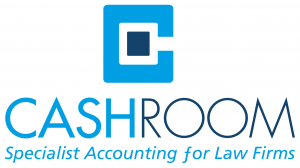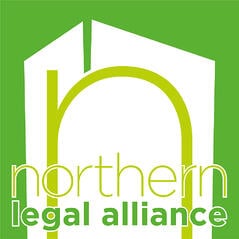Navigating AML Compliance Risks: 4 Red Flags Every Law Firm Should Know
A recent survey found that 70% of accountants and lawyers are more concerned about money laundering since Russian events and sanctions began, with 75% moving anti-money laundering (AML) up the company agenda in the past year.
What’s more, only 45% are completely confident in their current anti-money laundering procedures. Managing AML compliance in your firm when you’ve got the rest of your business to run often means that your team may be juggling several hats. As partner they may have their chargeable work, but as MLRO they may also need to oversee client onboarding, risk assessments and training.
Add staying up to date with compliance regulations and it’s fair to feel that something might slip through the cracks. What’s more, bad actors often deliberately exploit these weaknesses in order to launder their dirty money and carry out transactions with the proceeds of crime, using firms to add a layer of legitimacy to their work.
In this guide, we cover the most common red flags that law firms should be aware of when it comes to suspicious activity that might be indicative of money laundering.
Red flag 1: Your client has characteristics that make them higher risk
In your practice-wide risk assessment you will have likely already set out factors that require enhanced due diligence to be carried out. In the event that your risk assessment doesn’t cover these specifically, watch out for the following:
- If your client is a PEP (Politically Exposed Person) or a HNWI (High Net Worth Individual)
- If your client is a company that runs a cash-intensive business such as a hair salon, barber or restaurant (as these are often used by bad actors as a front for money laundering).
- If your client is acting secretively, or not giving you information that you need to carry out identity verification
- If your client has limited internet presence or is a business owner with an anonymised account such as Gmail
Having any of these factors doesn’t automatically disqualify you from on boarding these clients, but you should ensure that your firm’s policies, controls and procedures sufficiently protect you from the added risk you are choosing to shoulder.
Red flag 2: The parties to the transaction seem odd
This is especially in relation to transactions that have trusts, trustees, and beneficiaries. There ought to be a logical connection between all companies. If there are unexplained beneficiaries in the trust (for example, a beneficiary added to a family trust who is of no relation) or the reason, structure, or jurisdiction is not immediately clear, this is a red flag and you should carry out further investigation.
Red flag 3: the nature of the transaction is different to usual
Any of the following should raise red flags regarding the nature of the transaction: transactions that are significantly larger or more intricate than what is normal for your client (if you have worked with them before), transactions involving jurisdictions with weak anti-money laundering regulations, and transactions utilising shell companies for unclear purposes.
Red flag 4: They’re avoiding giving a logical answer to enquiries about Source of Funds
Assessing the source of funds is vital in fulfilling anti-money laundering (AML) obligations. When evaluating the funds used in a transaction, be wary of scenarios where the funds are supplied by a third party with no relation to the transaction or your client, or if the funds originate from a foreign country with no connection to your client. Additionally, the use of large amounts of cash with unclear explanations of its origins should also raise suspicions.
Conclusion
It is essential to be cynical and to consistently evaluate transactions, asking the question “does this seem legitimate?” The red flags outlined in this article serve as a guide, but it is not an exhaustive list. If you encounter any of these red flags, it is crucial to conduct further research and gather additional documentation to establish confidence in proceeding with the transaction. In the event that sufficient evidence cannot be obtained, it may be necessary to refuse to take on the client, take on the specific matter, and look to your MLRO or supervisory body for guidance on how to file a Suspicious Activity Report.
First AML streamlines the entire anti-money laundering onboarding and compliance process for accountants, lawyers, real estate agents, and financial institutions. Its platform allows businesses to onboard international and complex entities easily, making an otherwise complicated and manual onboarding process simple for end users and cost effective and compliant for businesses.
About Cashroom
 Cashroom provides expert outsourced accounting services for Law Firms including Legal Cashiering, Management Accounts and Payroll services. Our mission is to free lawyers from the complexities of legal accounting by supporting the industry with accurate management information and allowing lawyers to do what they do best – practice law.
Cashroom provides expert outsourced accounting services for Law Firms including Legal Cashiering, Management Accounts and Payroll services. Our mission is to free lawyers from the complexities of legal accounting by supporting the industry with accurate management information and allowing lawyers to do what they do best – practice law.
We’ve been with Cashroom for quite a few years now, and I would never go back. In any business, and particularly in times of uncertainty, it’s important to control your costs, and that’s exactly what you help me do.




